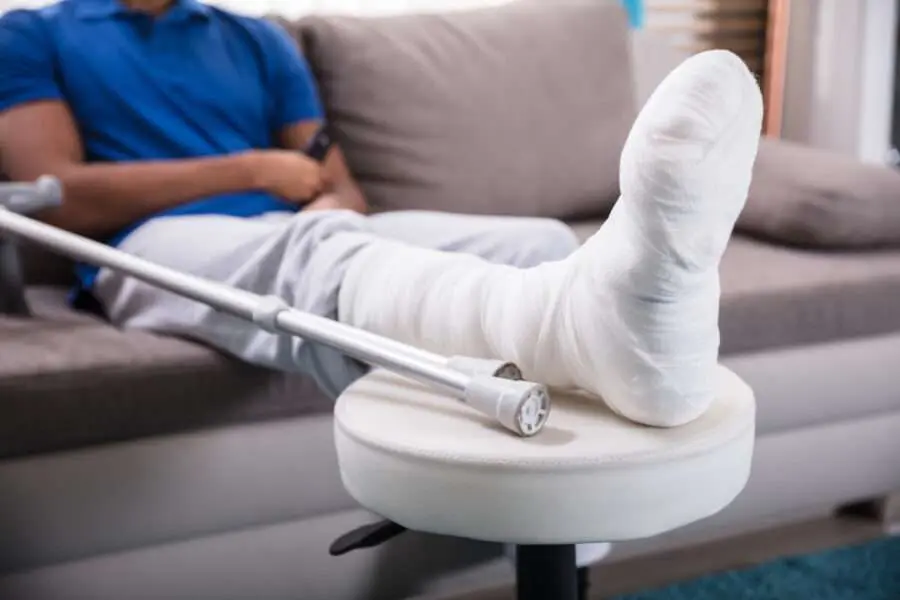
Normally, health experts do not recommend a sedentary lifestyle. But if your ability to move is limited by an injured foot, a sedentary lifestyle may seem inevitable.
However, if you have the chance, you should seize every opportunity to keep active.
Here are 5 reasons why you should stay active despite having a cast on your foot.
1. Exercise helps the foot heal faster
Of course, a cast on your foot or leg should not be taken lightly.
In fact, you should consider several parameters such as the nature of the injury and the type of cast before starting any workout.
With your doctor’s approval, however, exercise can go a long way in helping your foot heal.
Physical activity provides the body’s functioning with the following benefits:
- Improved blood circulation
- Helps maintain good muscle tone
- Maintains flexibility of the toes
- Reduction of tissue inflammation
- Reduces the incidence of venous thrombosis (inflammation of the veins)
2. It helps ensure good bone density
Wearing a cast for a long time has some physiological pitfalls.
Seeing as the foot must be held in a stable position for several weeks, its structures are not mobilized as they normally should be.
One of the possible consequences of this long-term immobilization is the loss of bone density.
Fortunately, bone loss in the affected limb can be slowed by static or even moving exercises, if the situation allows.
3. It keeps weight gain in check
The lack of exercise will also not do any favors for your body weight.
While it can be difficult to motivate yourself to exercise with a cast, minimal mobility will keep you from falling into poor lifestyle habits while you recover.
You should also think about the consequences of the immobilization cast when you need to return to normal movement.
In fact, weight gain itself is responsible for other foot injuries.
Among other things, obesity can cause the occurrence of:
- Plantar fasciitis
- Stress fractures
- Achilles tendonitis or goose foot tendonitis
- Metatarsalgia
- Plantar fissures
- The accumulation of corns and calluses
- Toenails that are more prone to trauma
4. It minimizes the atrophy of the structures of the foot
The toes within the cast will not be used much. Therefore, they may weaken or even bend for a short time.
After removing your cast, you will likely notice musculoskeletal changes such as:
- A calf and quadriceps that are smaller than those of your healthy leg
- Joint stiffness in the ankle
- Stiffer toes
- A foot that appears to point outward when walking
Relative atrophy of a long immobile leg or foot is normal.
However, exercise can reduce the effects and minimize the loss of muscle mass.
5. It helps keep up the morale
Healing a broken or injured foot is not only a physical but also a mental challenge.
In this regard, the benefits of physical activity on mental health are anything but negligible.
Among other things, this allows us to counteract the negative effects of a sedentary lifestyle on mental health, including:
- Depression
- Mood swings
- Sleep disturbances
- Aggression
- The drop in energy
- Anxiety and stress
Resume your sporting activities with confidence thanks to PiedReseau
After the cast has been removed and the foot has healed, you may require orthopedic devices to resume sports regularly.
This is where your podiatrist can help.
By analyzing your situation and previous diagnoses, they can offer you customized foot orthoses made for sport and even the application of therapeutic taping.
PiedReseau clinics make it possible for you to get back into motion after a long convalescence.